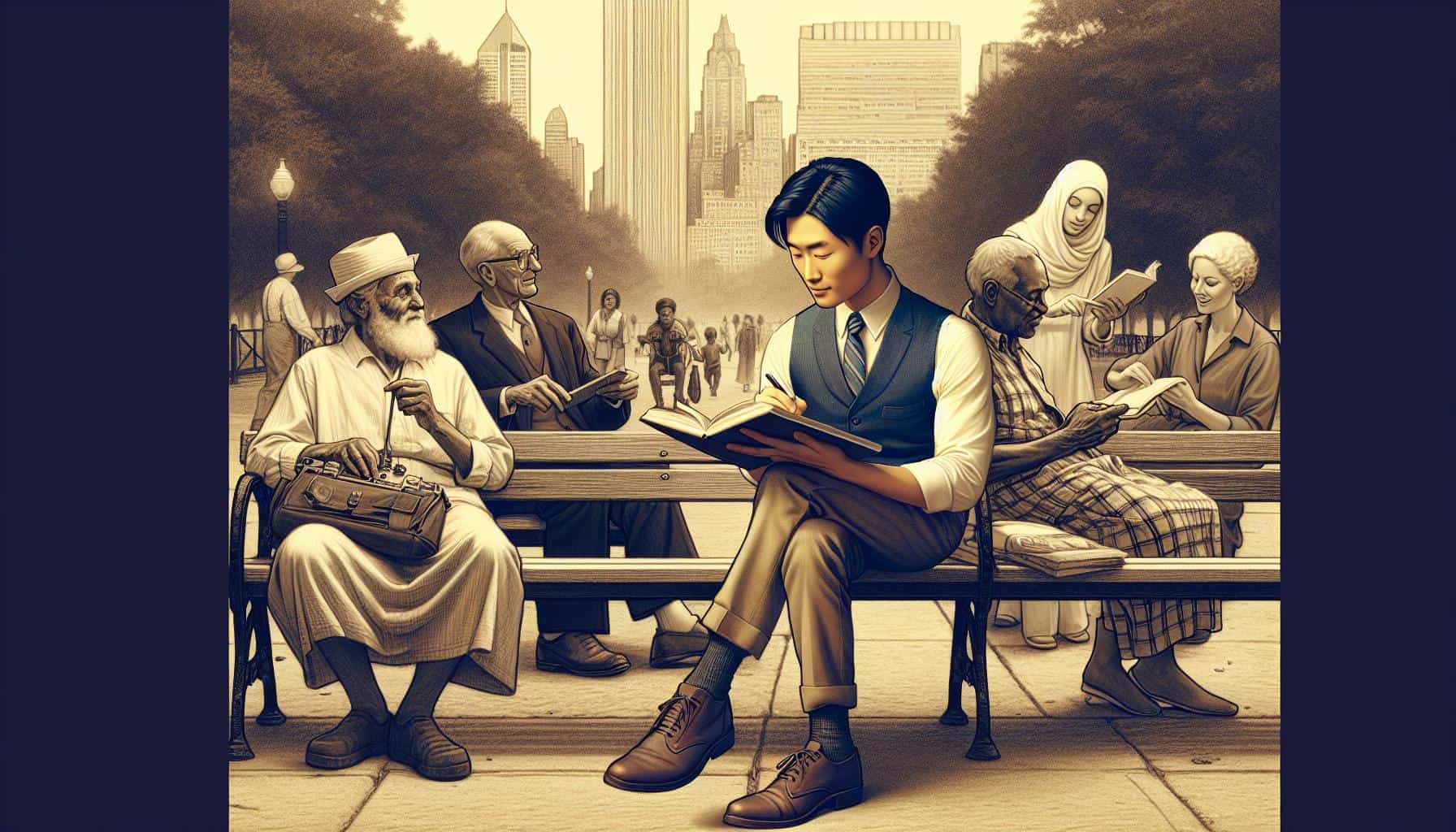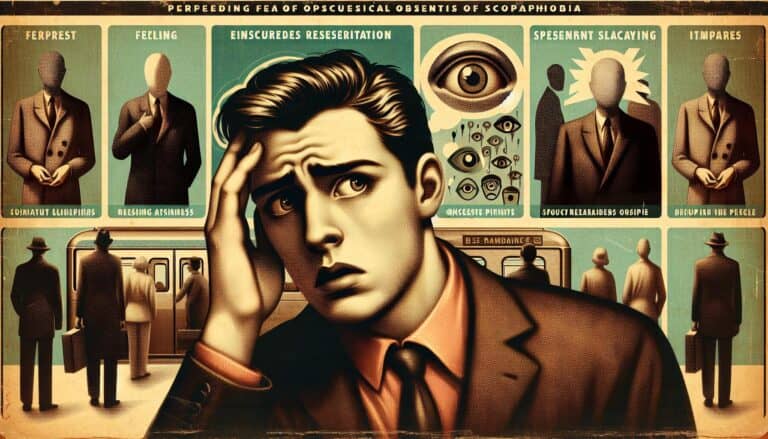You’re sitting at a cafe, sipping your favorite drink, and observing the bustling crowd. Ever thought about how these real-life snippets could be a goldmine for your fiction? People watching isn’t just a pastime; it’s a tool that can breathe life into your characters.
Imagine drawing inspiration from the couple arguing at the next table or the child playing with his food. These everyday scenes hold the key to creating authentic, relatable characters that leap off the page. Let’s dive into how you can harness the power of people watching to enrich your fictional world.
People watching enriches fiction by providing real-life inspiration for authentic characters. Observing behaviors, interactions, and emotions in everyday settings helps writers capture human nuances. Effective strategies include discreet observation and noting details, which deepen character development and enhance storytelling.
Understanding the Art of People Watching
People watching isn’t just a pastime; it’s a skill that can significantly enhance your fiction writing. At its core, this practice involves observing the people around you—taking note of their behaviors, interactions, and peculiarities. But to truly master this art, you need to dive deeper into the subtle nuances of human behavior.
Key Strategies for Effective People Watching
To get the most out of people watching, you need a keen eye for detail and a bit of patience. Here are some strategies to help you hone your observation skills:
- Find the Right Spot: Choose a place where people are likely to gather and display a range of emotions. Busy city streets, parks, and cafes are great starting points.
- Stay Unobtrusive: Blend into your surroundings. The goal is to observe without influencing the natural behavior of those you’re watching.
- Note Interesting Details: Pay attention to body language, facial expressions, and the dynamics of interactions. These can serve as inspiration for character development and dialogue.
- Jot It Down: Always keep a notebook or device handy to record your observations. Real-life snippets can serve as a valuable resource when you’re fleshing out characters or scenes.
Through these strategies, you’ll begin to notice patterns and traits that make individuals unique. This insight is invaluable when crafting believable and relatable characters.
Observing Beyond the Surface
Understanding motivations and emotions requires you to look beyond surface-level interactions. Try to infer what might be driving a person’s behavior or how they’re feeling in a given moment. Is the hurried man in the suit stressed about a meeting, or is he simply late for a date? What about the woman quietly observing a painting in a gallery? Could she be an artist seeking inspiration, or is she reminiscing about a lost love? These interpretations add depth to your characters, making them resonate more deeply with your readers.
By developing the art of people watching, you’re not just gathering material for character creation. You’re gaining a deeper understanding of the human condition, which is at the heart of compelling storytelling. Incorporate this practice into your routine, and watch as your fictional world becomes richer and more authentic.
Developing Observation Skills
To create realistic and relatable characters in your fiction, sharpening your observation skills is key. It’s not just about watching; it’s about seeing. Understanding the subtleties in human behavior and interaction can elevate your writing, making your characters come alive on the page.
Find Your Focus
Start by narrowing down what you’re looking for. Are you interested in body language, dialogue, or perhaps the dynamics between individuals in different settings? Focusing on specific aspects can make your observations more effective and manageable.
Practice Mindful Observation
Mindful observation involves being fully present in the moment, letting go of preconceived notions, and absorbing the world around you. It’s about noticing the small details—the way a person’s eyes dart around when they’re nervous, or how they play with their ring when deep in thought. These nuances are goldmines for character development.
Keep a Journal
Carry a notebook wherever you go. Jotting down your observations can not only help you remember them better but also allows you to reflect on these insights later. Your journal can become a treasure trove of ideas and details to incorporate into your writing.
Enhance Your Skills with Prompts
To hone your observation skills, challenge yourself with prompts. For example, decide to notice everyone wearing red in a day, or focus on identifying non-verbal cues between people in a coffee shop. These exercises can sharpen your focus and ensure you’re always improving.
Remember, developing keen observation skills takes time and practice. The more you immerse yourself in the world around you, the richer your character portrayals will become. It’s about capturing the essence of humanity, in all its complexity and beauty, to weave stories that resonate and endure.
Finding Inspiration in Real-Life Characters
Life’s bustling streets, serene parks, and crowded coffee shops are treasure troves of characters waiting to be discovered. As a fiction writer, you’re not just an observer; you’re a seeker of stories hidden in plain sight. Real-life characters provide a goldmine of inspiration, each with their unique quirks, conflicts, and backgrounds that can enrich your narratives.
Every person you encounter has the potential to inspire. Consider the elderly man feeding pigeons in the park, the group of teenagers laughing boisterously at a café, or the harried parent juggling groceries and children at the supermarket. These scenes are snapshots of life, each offering insights into human nature, relationships, and the complexities of existence.
To tap into this rich source of material, you’ll need to pay close attention to:
- Details: Observe the small things—the way a person dresses, their gestures, how they interact with others. These details can bring your characters to life.
- Dynamics: Groups of people provide a wealth of information about social dynamics and relationships. Watching how individuals relate to each other can help you craft more realistic character interactions.
- Emotions: Look beyond the surface and try to perceive the emotions driving people’s actions. Is that laughter covering up insecurity? Is the seemingly angry person actually hurt?
Incorporating real-life characters into your fiction not only adds depth and authenticity but also resonates with readers. They recognize the nuances of human behavior and emotion you’ve observed and translated into your narrative. This connection is the mark of truly impactful storytelling.
Remember, the world is your canvas, and people-watching is just one of the tools at your disposal to capture the vibrant hues of human experience. Keep your notebook handy, your senses sharp, and your mind open. The stories are out there, waiting for you to bring them to life in your next piece of fiction.
The Importance of Body Language and Mannerisms
When crafting characters for your fiction, you can’t overlook the power of body language and mannerisms. These elements fill in the gaps that dialogue alone cannot bridge, potentially transforming flat characters into vibrant, living beings. It’s in the way a person taps their foot when anxious, or how their eyes dart around a room when they’re lying. These non-verbal cues are goldmines for writers looking to deepen their character development.
Observing these subtle cues requires a keen eye and a patient demeanor. Start by focusing on one person in a crowd and note their posture, gestures, and facial expressions. How do they interact with the environment and the people around them? Is there a particular movement they repeat, and what might it signify? These observations can serve as a foundation for creating characters that feel authentic and relatable.
Remember, body language and mannerisms often speak louder than words. A character’s slump might reveal defeat without a single word uttered, while clenched fists could indicate pent-up anger or resistance. Integrating these details into your narrative allows readers to “see” the character, adding a layer of nuance and depth that enriches the storytelling experience.
To get the most out of your people-watching sessions, consider carrying a small notebook or using your phone to jot down striking observations. Pay particular attention to:
- Facial expressions during different emotions
- Gestures that accompany specific thoughts or feelings
- Posture and how it changes in various situations
By weaving these observations into your characters, you turn them into reflections of real-life people, each with their own story and personality quirks. This not only makes your characters more engaging but also elevates your writing, captivating your audience with a profound sense of realism and humanity.
Capturing Dialogue and Verbal Cues
In your journey to craft vivid characters for your fiction, one cannot overlook the gold mine that is dialogue and verbal cues in people watching. These elements are as crucial as body language and provide a window into your character’s psyche. You’ll find that how people say something often reveals more than the words themselves.
Dialogue isn’t just about the words exchanged; it’s about the rhythm, tone, and stutter that color human interaction. While observing, pay close attention to how individuals argue, joke, or share stories. Notice the change in dynamics when they’re excited, scared, or annoyed. These nuances create characters that leap off the page, with dialogues that resonate with authenticity.
Moreover, verbal cues offer a glimpse into personalities and emotional states. Is there a lilt in their voice when they’re happy? A monotone when they’re disinterested? These cues can help you portray your characters’ emotions subtly, enhancing the narrative without explicitly stating how they feel.
Here’s how to effectively capture dialogue and verbal cues:
- Choose public spaces where conversations flow naturally, such as cafes or parks.
- Listen for unique phrases or slang that can add authenticity to your character’s voice.
- Note the pace of conversations. Rapid exchanges might indicate excitement or tension, whereas slower dialogues could suggest contemplation or sadness.
It’s essential, however, to remain respectful and discreet in your observations to avoid invading privacy. Using a small notebook or your phone, jot down interesting dialogues or verbal exchanges you overhear, making sure to anonymize the content.
Incorporating realistic dialogue and verbal cues into your writing not only makes your characters relatable but also deepens the readers’ engagement with the story. Through careful observation and note-taking, you’ll find that the conversations you overhear can significantly enrich your narrative, bringing your fictional world to life with an unparalleled depth.
Bringing It All Together: Creating Authentic Fictional Characters
After spending hours or even days gathering observations through people watching, the next step is weaving these insights into your fiction writing. It’s a process that requires a bit of finesse, creativity, and an understanding of human psychology.
Start by categorizing your observations. Sort them into physical descriptions, mannerisms, dialogues, and interactions. This organization makes it easier for you to retrieve and incorporate them into your characters’ profiles. Remember, the goal isn’t to mimic reality exactly but to use your observations as a springboard for creating relatable, multi-dimensional characters.
Next, infuse your characters with uniqueness. Perhaps you’ve noted a peculiar way someone laughs or an unusual phrase they use. These small details can set your character apart, making them memorable to your readers. However, be cautious about overdoing it. Your character should feel like a person, not a caricature.
Integrating authentic dialogue is crucial. The snippets of conversations you’ve recorded can serve as inspiration for how your characters speak. Pay attention to the rhythm, flow, and idiosyncrasies of real-life speech. However, it’s important to strike a balance. Real conversations often include filler words and meandering topics, which might not serve your narrative well. Aim for dialogue that feels real but is more streamlined and purposeful.
Combining these elements with a rich backstory further elevates the authenticity of your fictional characters. Backstories explain why a character might react a certain way or choose specific words. They provide depth and motivation, making the character’s actions and choices in the story more believable.
People watching is more than a passive activity; it’s an active engagement with the world that can fill your stories with life and authenticity. As you refine your observations and integrate them into your fiction, you’ll find that your characters begin to breathe, think, and feel on their own. This connection not only enhances your narrative but also deepens your readers’ engagement and investment in the story.
Conclusion
Embracing the art of people watching can significantly elevate your fiction writing. By observing the world around you with a keen eye, you’ll gather a treasure trove of details that breathe life into your characters. Remember, it’s the little nuances, from a shy smile to a nervous tic, that make characters leap off the page.
So grab your notebook, find your observation spot, and let the world inspire you. As you translate real-life observations into your stories, you’ll not only enrich your characters but also captivate your readers with authenticity and depth. Now, it’s time to step out and see your next character unfold right before your eyes.







